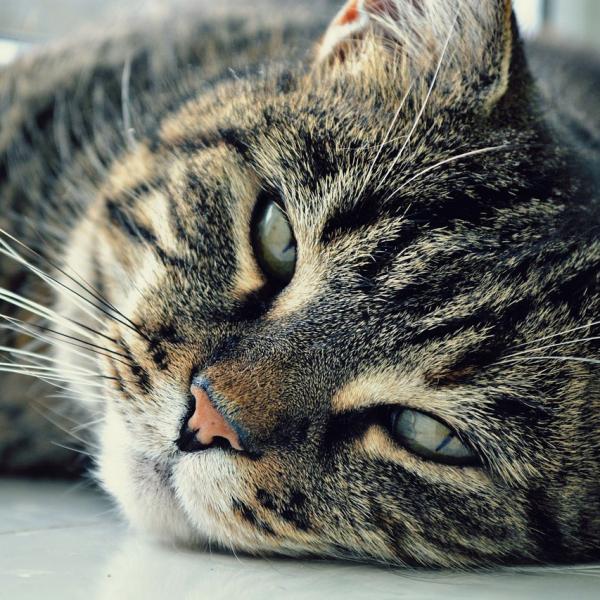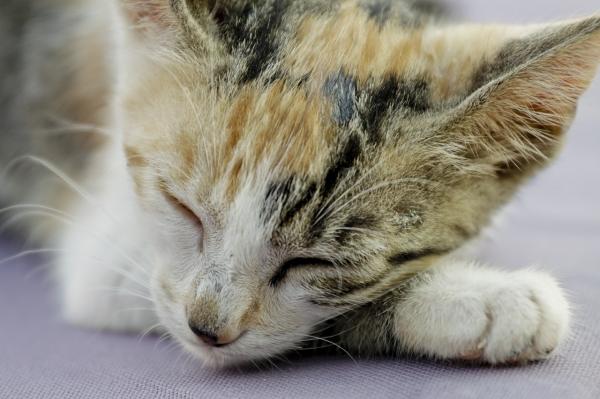Leishmaniasis in cats – Symptoms and treatment

La leishmaniasis in a disease caused by the protozoan (unicellular eukaryotic organism) Leishmania infantum. It is endemic to the Mediterranean Sea, being in Spain very frequent especially in the Mediterranean coast and center of the peninsula. Technically it is a zoonosis, because it affects the human being, although mainly dogs are the ones that suffer most from the disease, acting as carriers, being mortal if a veterinary treatment is not initiated.
The lesihamia is transmitted through the bite of a mosquito, belonging to the genus Phlebotomus. In this way, the mosquito bites a sick and / or carrier dog and, once the protozoan matures in the insect, it bites another dog, introducing the pathogenic agent. That is, without mosquito disease can not be transmitted. Although the dog is the main victim of this pathology, the truth is that it can also affect other animals such as cats. Therefore, in detail what are the symptoms of leishmaniasis feline and what does his treatment consist of?
Feline leishmaniasis
Very common in dogs, leishmaniasis was considered a very strange pathology in the cat, due to its natural resistance and the effective response of the immune system to the disease. But, at present, it is observed that its incidence is increasing in a worrying way. Depending on the area of the Iberian Peninsula, they may be affected from 1,7% to 60% of the cats studied. It seems that there is a greater chance of getting the disease in cats suffering from other diseases, which reduce the effectiveness of the immune system, such as feline immunodeficiency or toxoplasmosis.
Symptoms of feline leishmaniasis
Leishmaniasis in cats is a disease with a long incubation period (it takes a long time to manifest symptoms) and once these develop, they are quite nonspecific. In the cat, the disease can study in three different ways:
-
Cutaneous form. Painless, subcutaneous nodules are observed, mostly located in the head and neck. In addition, these symptoms of feline leishmaniosis are often accompanied by an increase in the size of nearby lymph nodes. Likewise, these ganglia can later be opened and ulcerated. Other skin symptoms can be observed.
Eye shape. The eyes are affected, with conjunctivitis, blepharitis (inflammation of the eyelids), uveitis (inflammation of the uvea), peri-orbicular alopecias (hair falling around the eyes), etc.

Diagnosis of feline leishmaniasis
The disease is diagnosed by specific tests, such as blood test, with a test that looks for and quantifies the antibodies generated by the animal in the presence of the protozoan. It is not possible to make a symptomatic diagnosis, because the symptoms are very nonspecific.
Treatment of feline leishmaniasis
In leishmaniosis, both in humans and in dogs and cats, there are two strategies when it comes to treatment. On the one hand, there is preventive treatment and, on the other, the curative treatment once the disease is diagnosed.
- El preventive treatment against feline leishmaniasis it consists of avoiding contact with the mosquito. To do this, physical barriers are used (for example, putting mosquito netting on the windows) or using different insecticides, such as repellents. In the cat the use of repellents is very limited, because most of them are toxic to them, so it is necessary to consult a veterinarian before opting for this preventive measure.
- In the case of treatment to cure leishmania in cats, there are no treatment protocols as effective as in dogs, because until now the positive diagnosis of the disease in cats has been scarce. Drugs such as allopurinol and n-methyl-meglumine are used. All treatment has to be designed by a veterinarian.

This article is merely informative, in .com we do not have the faculty to prescribe veterinary treatments or make any kind of diagnosis. We invite you to take your pet to the veterinarian in case of any type of condition or discomfort.
If you want to read more articles similar to Leishmaniasis in cats – Symptoms and treatment, we recommend that you enter in our section of parasitic diseases.


